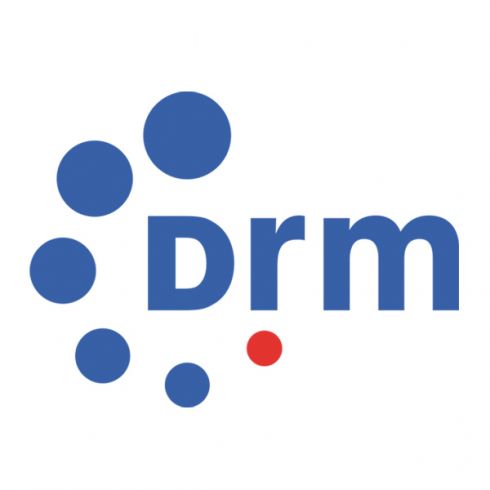
NEW DELHI: The DVB-T2 platform proposed by Prasar Bharati for Digital Terrestrial Transmission has capabilities to transmit radio services on it and can thus help the growth of Digital Radio Mondiale in the country.
This was stated by Prasar Bharati in its response to the Telecom Regulatory Authority of India's Consultation Paper on “Issues related to Digital Terrestrial Broadcasting in India”.
While the paper relates to television, the last question was - as in all consultation papers issued by TRAI – for any other issues stakeholders may want to raise.
Stressing that the terrestrial platform must be digital to remain viable in the long term, Prasar Bharati has suggested that provision of DVB-T2 Tuner cab be made mandatory on all TVs imported/manufactured in India and embedding of DVB-T2/T2 Lite tuner in mobile phones should also be mandated after 1 April 2018.
At the outset, the pubcaster pointed out that about 37 countries have started digital Radio using DVB-T/T2 Transmitters. Some of these are Copenhagen’s 10 Radio services; Italy’s 34 Radio services; Spain’s 24 Radio services; the United Kingdom’s 24 Radio services; Poland’s 12 Radio services; Belgium’s 6 Radio services, and Norway’s 5 Radio services
It said DRM Consortium and All India Radio carried out trials in New Delhi in May 2011 for the DRM+. A single test frequency of 100.1 MHz carried three programme channels - Gold DRM (FM), Rainbow DRM (FM), and AIR news in Journaline.
The robustness optimised DRM Multiplex configuration used the 4-QAM mode with PL 1, resulting in an available net capacity of 49.7 kbps. It carried 'FM Gold' with an assigned bit rate of 22. 640 kbps, 'FM Rainbow' with 22.720 kbps, and Journaline and the PRBS sequence with 1.840 kbps each.
The capacity optimised DRM Multiplex configuration used the 16-QAM mode with PL 2, resulting in an available net capacity of 149.0 kbps. It carried 'FM Gold' and 'FM Rainbow' with an assigned bit rate of 70.0 kbps each, Journaline with 3. 840 kbps, and the PRBS sequence with 4.560 kbps.
A.DAB+ uses HE-AAC at 64 kbit per second, including the 1/12 bits for the second level RS error correction. The bit-rate for the audio is then 64 kbit per second. This enables 17 or 18 services in a DAB mux (1152 kbit per second).
A T2 (Lite) transmitter can get 3.300 Mbit per second in one PLP and may transmit 50 channels with full 64 kbit/sec. HE-AAC can also be broadcast. Classical music channels can be allocated 128 kbit/sec. With DVB-T2 3.3 Mbit/s capacity (~ 50 HE AACv2 radio stations) can be achieved compared to the DAB / DAB+ 1.1 Mbit/s capacity (~ 6 mpeg1 layer II / ~ 16 HE AACv2 radio stations) with the same propagation model. DVB-T2 can provide a 2.5 to 4 times increase in capacity over the DAB/DAB+ standard under the same broadcasting conditions (2 ½ - 4 Mbit/s vs ~1MBit/s). The DVB-T2 standard offers the efficient HE-AAC audio codec, Dolby AC-3, Dolby Enhanced AC-3, AMR-WB+ and AMR- WB speech codec and H.264/AVC video codec (4:3/16:9).
The Frequency Bands in Radio are:
1. The DAB system: DAB, DAB+ and T-DMB for VHF band III (174-230 MHz)
2. The DRM system: DRM in OFDM Modes A-D (DRM30) below 30 MHz and DRM in OFDM Mode E (DRM+) for VHF band I (47-68 MHz),
3. FM band (87.5-108 MHz) and VHF band III (174-230 MHz)
4. DVB T2 Lite: 1.7 MHz Raster in VHF Band III(174-230 MHz) 8 MHz in UHF (470-698 MHz)
Summary comparison of various Radio Standards:
| DRM+ | DAB | T2 Lite | |
Programme channels | Approx 2-3 programmes | Approx. 16 programmes | Approx. 36 programmes | |
Additional services | Simple web pages (Jourmaline) rich multimedia programme guides, slideshows, traffic information etc. | |||
Date rate | 37-186 kbit/s | ~ 1125 kbit/s (PL=3A) | ~ 3300 Kbit/s | |
Audio encoding | MPEG-4 HE-AACv2 | |||
Frequency range | VHF band II (FM band 87.5- 108 MHz) & VHF Band III (174-230 MHz) | VHF Band III (174-230 MHz) UHF (470-698 MHz) | ||
Available transmitter network configurations | Multi Frequency Network (MFN) or Single Frequency Network (SFN) | |||
Modulation | Digital COFDM | |||
Bandwidth | 96kHz |
| 1.7 MHz , | |
1536kHz | ||||
Therefore, DVB-T2 may also be used for digitalization of radio services in India.
Referring to Receiving devices, Prasar Bharati said there are various multi standard chips available for receiving devices. Octopus 3, Parrot “O3+” takes digital and analogue radio reception to the next level. The current generation is already deployed through major European, Japanese and Chinese OEMs and enables global radio reception: AM, FM, DAB, DAB+, DRM, DRM+, DVB-T2 Lite and HD Radio standards. Sony launches new mobile one chip DVB-T2 & T2 Lite digital radio & TV Tuner module with very low power consumption – under 200 mW. The SMT-EW100 series is the DVB-T2 compatible module, especially designed to be incorporated in the mobile devices and is the first module from Sony specialized for mobile usage.
The tuner module supports various types of digital terrestrial digital radio & TV broadcast systems, including DVB-T, DVB-T2, DVB-T2 Lite, ISDB-T and ISDB-Tmm including the 1.7 MHz BW in VHF band III as an alternative to DAB/DAB+/ DMB.
The pubcaster said It will be interesting to see the new DVB-T2 and T2 Lite products with the new mobile one chip solution from Parrot, Sony (SMT-EW100) and Siano (SMS4430) with low power consumption that has gone . Integrated Digital TV(iDTV)(In-built DVB-T2 Tuner) Brands like Samsung, LG, VU, Sony etc. already available in Indian Market. Some Dongles and Wi-Fi Dongles for DVB-T2 available for mobiles and tablets and some Mobiles with Embedded chips for DVB-T2 are available in France, Thailand etc.